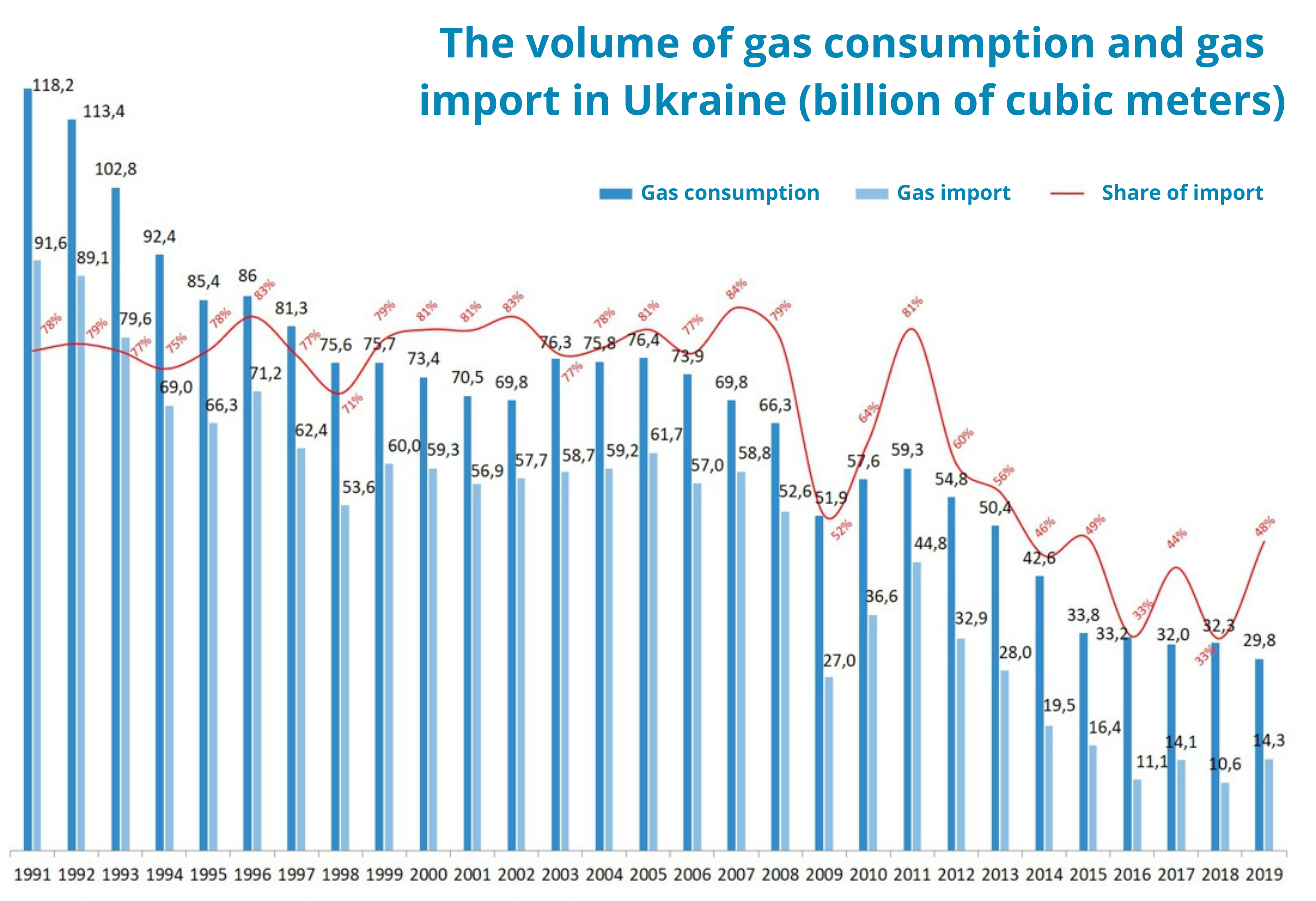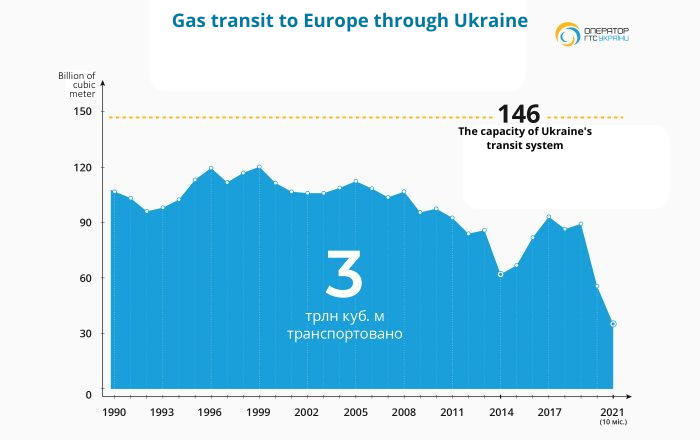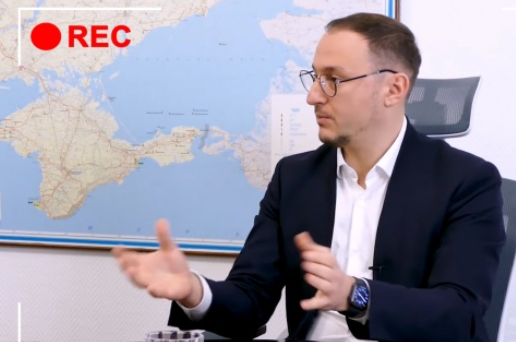Here are the main facts about the current situation in Ukraine and how serious the energy problems that Russia is trying to create actually are.
Electricity and coal supplies
Ukraine has a developed system of nuclear and thermal power plants. Although many thermal plants are not in the best shape, the country even used to export energy to the EU. The last time Ukraine had problems with electricity was in 2014. Because of the Russian occupation of Donbas, the coal heart of Ukraine, there was not enough coal for thermal power plants.
Multiple Ukrainian media and local authorities warn that this situation may repeat itself this winter because of Russia’s artificial limits on coal imports to Ukraine. At the same time, Ukrainian prime minister Denys Shmyhal emphasized that currently there are no electricity outages in Ukraine and they are not expected in winter.

Ukraine’s attempts to replace stopped Russian coal imports by purchases from Kazakhstan have failed. Russia blocked transit from Kazakhstan, allegedly because of railway repairs. Russia has also refused to supply electricity to Ukraine, which could reduce the demand for coal.
Alternative Belarusian electricity imports have also become unstable in November. While the situation has become close to critical, experts say there is no need for panic yet. In particular, part of the coal can be substituted by gas, while an additional seven ships with coal from the US and Columbia are already on the way to Ukraine, with the first one having already arrived on 21 November.
These shipments are good but still not enough. Ukraine uses on average 3.5-4.5 million tons of coal per month in winter. The remaining stores
are 1.5 million. With about 2 million tons of coal mined monthly in Ukraine and an additional 0.5 million shipped, the need for additional shipments of coal remains.
According to the Minister of Energy Herman Halyshchenko, the consumption of coal from October 2021 to March 2022 is expected at 15.3 million tons, of which Ukrainian production will be about 9 million tons, and already contracted imports about 4 million. Therefore, Ukraine has to contract an additional 2 million tons of coal. There were no public remarks made about the possible sources of this coal, although the government assured it was in control of the situation.
During the first 9 months of 2021, before Russia halted coal exports to Ukraine, Ukraine imported 10.3 million tons of coal from Russia. This is about a third of the country's total consumption since the beginning of this year. The coal imported from Russia is predominantly the coal from Donbas that was Ukrainian until 2014. The occupation heavily undermined Ukraine’s energy security related to coal and therefore electricity generation.
To address these risks, thermal and nuclear power plants have been conducting diversification of supplies since 2015. For example, six of the 15 nuclear reactors switched from Russian to American nuclear fuel. However, this wasn’t applied to all of the power plants. An investigation by Priamyi TV channel claims that the increase in the imports of coal from Russia in the first half of 2021 is related to Ihor Kolomoyskyi and Victor Medvedchuk’s oligarchic businesses that have attained support from the Office of the President by corruption schemes instead of proclaimed diversification policy.
Currently, 20 blocks of thermal power plants are not working in Ukraine because of the lack of fuel. To cover this deficit, production in nuclear power plants has increased to two-thirds of total electricity production in Ukraine.
Gas
Over the last eight years, Ukraine has not increased domestic gas production significantly. At the same time, it has reduced total consumption from 118 billion cubic meters in 1991 and 50 billion in 2013 to 31 billion in 2020. This has led to a significant increase in the share of domestic gas production, giving the country more independence. Gas consumption was reduced mainly by the introduction of market gas prices, and modernization
of housing and insulation, although more can be done:
"Consumption of 30 billion cubic meters of gas per year, given the size of Ukraine's GDP, is too large. For example, in Poland GDP is four times higher, and gas consumption is 1.5 times smaller than in our country," states the president of the Center for Global Studies, Mykhailo Gonchar.

Since 2015, Ukraine has not been buying any gas from Russia. The remaining gas deficit is covered by imports from the EU. This step, earlier unthinkable, gave Ukraine more freedom from Russian gas blackmail but at the same time should not be considered a total abandonment of Russian gas.
The European gas market depends on Russian imports to the tune of 50%. Physically, Ukraine is still importing part of its gas from Russia, even despite the surge in US liquified gas imports. The Kremlin’s oversized share of the European gas market is the main reason behind the contemporary gas crisis in Europe, where Russian Gazprom has the opportunity to create an artificial gas deficit and manipulate prices.
Obey the Kremlin or pay up: why the EU’s heating bills will skyrocket this winter
Ukraine is partially influenced by the European gas crisis. Yet it still remains in a relatively favorable and stable position. Customer prices remain relatively low, between UAH 7.79 and 13.50 ($0.27-0.48) per cubic meter. National and local authorities pay huge subsidies covering part of the price (Kyiv city alone has allocated UAH 2 billion ($74 million) this year to compensate part of utility bills). The remaining 16.5 billion cubic meters in reservoirs is considerably less than 27 billion last year, but enough to get through the entire heating season, authorities claim, and even offer some gas to neighbors like Moldova.
While there is no critical shortage of gas on the Ukrainian market, Russia's decision to stop transit through Ukraine is the real danger. Gazprom has already limited gas transit through Ukraine radically from 186 million cubic meters per day at the end of 2020 to 57
million cubic meters per day in November 2021.
And this is not only a matter of financial losses for Ukraine. Gas transit through Ukraine is also a guarantee for the country’s security. Putin is reluctant to wage a full-scale war against Ukraine until the gas is shipped because the pipeline can be easily damaged, cutting Europe off from Russian gas. Russia won’t receive its money to continue the war and more reaction from the EU can be expected.
The suspension of gas transit through Ukraine also carries the danger of creating technical difficulties for the entire system. With no gas in transit, the pressure in Ukraine’s pipeline system will decrease and additional investments may be needed to pump gas for consumers in some remote areas, in particular in eastern Ukraine.

Putin openly declares that he is seeking to stop gas transit through Ukraine by the use of Nord Stream 2, allegedly because of the decrepit transit system in Ukraine, even though the country heavily invested into its modernization in recent years and there were no incidents during full-scale transit.
Germany's suspension of Nord Stream 2 certification on 16 November 2021 is only a small step to force the Kremlin to renew gas transit through Ukraine and put an end to the artificial gas deficit in Europe. Yet more can be done to stop the Kremlin's energy blackmail of Europe and Ukraine, including the restoration of US sanctions related to Nord Stream 2.
Renewable perspectives or more diversification of gas, coal, and nuclear fuel supplies?
Due to the high share of outdated power plants in Ukraine, especially thermal blocks, building new facilities is necessary. Favoring renewable energy became the mainstream policy since 2015. The share of renewables in Ukraine’s electricity generation has increased from 1% to about 8% due to one of the highest green tariffs in Ukraine worldwide, which has attracted investments.
In 2020, a crisis arose as the government halted payments according to the green tariffs. However, in the latest memorandum with the IMF of 24 November 2021, Ukraine promised to pay all debts according to green tariffs. Part of the debts has been already covered by money attracted from bonds issued in November 2021.
However, the problem of efficient balancing of electricity produced by renewables remains. The country needs additional balancing and storage facilities to keep the growth of renewable production, which needs further investments.
Making Ukraine green again: how to keep the renewable “energy miracle” going

The other perspective to limit dependence on coal and gas is hydrogen fuel, which is also in high demand in the EU.
According to Oleksiy Riabchyn, the advisor at the Ukraine’s state oil and gas company Naftogaz, Ukraine can cover between 3% to 10% of all hydrogen demand in Europe. He says Ukraine can either dispose CO2 exuded during the production of so-called “blue” hydrogen from methane, or it can produce “green” hydrogen from water, using additionally created green power plants – green hydrogen is produced with the use of electricity.
In fact, all these alternatives are dependent on the creation of additional renewable power plants which is a long-term and costly perspective. Moreover, the development of renewable power plants often supports the Chinese economy, for China is the worldwide leader in the production of renewable power plant equipment. Diversification of coal and nuclear fuel, increase of domestic gas production is the most reliable short term alternative to Russian supplies. Despite progress in this regard, Ukraine could do and still can do more to achieve the goal of no imports of coal or gas from Russia.
Read also:
- After Nord Stream-2: how Ukraine can protect its gas transit
- What Europe can learn from Ukraine’s gas woes with Russia
- Obey the Kremlin or pay up: why the EU’s heating bills will skyrocket this winter
- The Kremlin could instantly end Europe’s gas crisis by restoring transit through Ukraine
- Is freedom from the Russian gas needle possible for EU & Ukraine?





